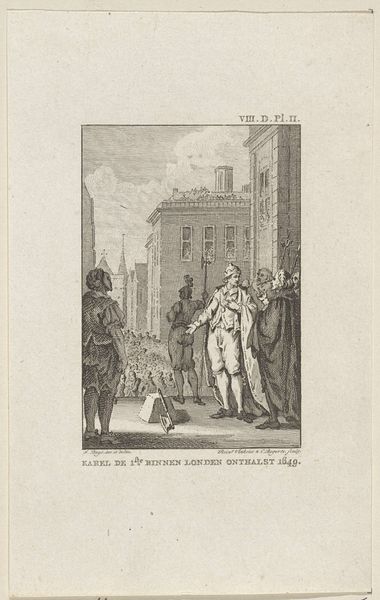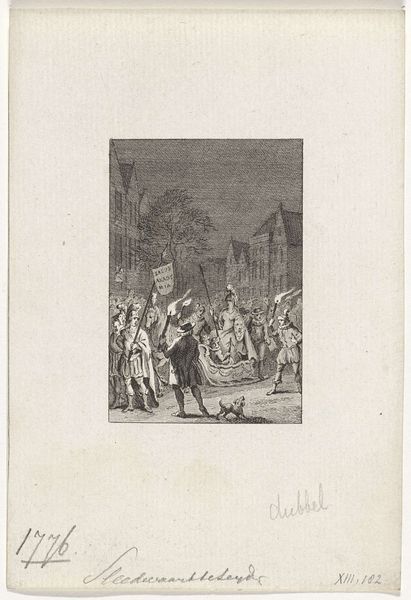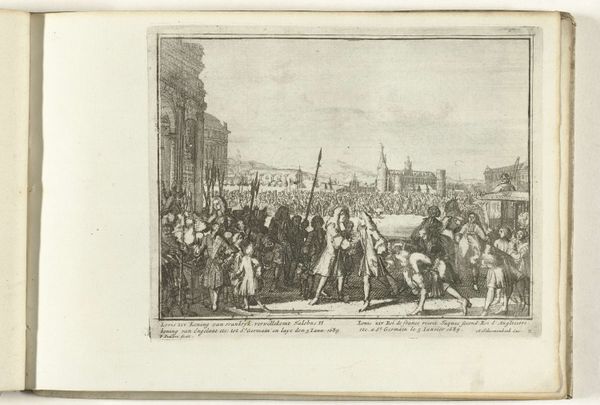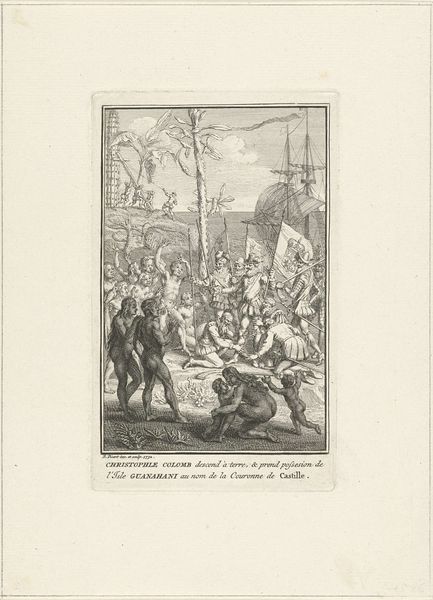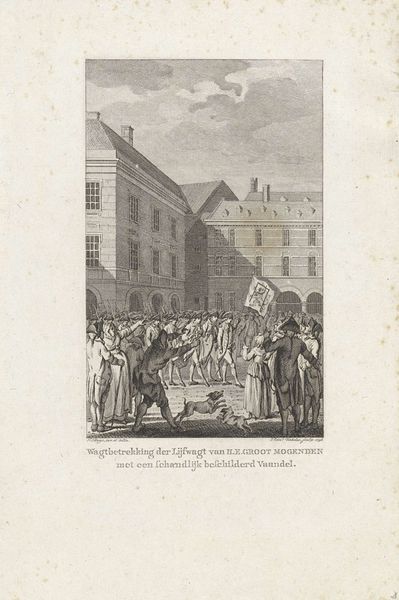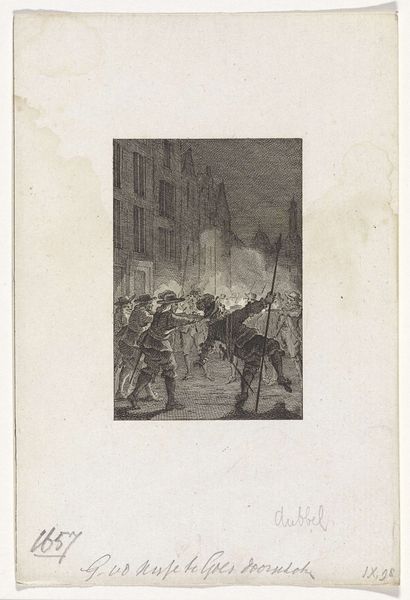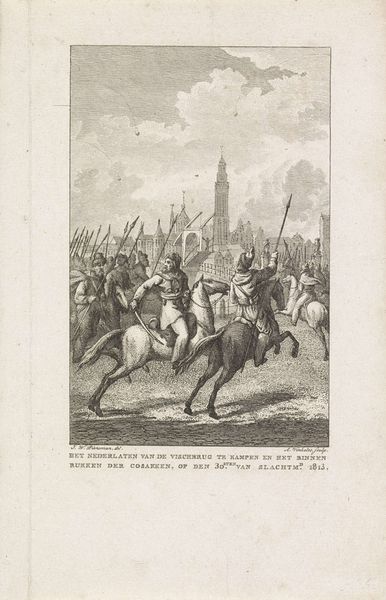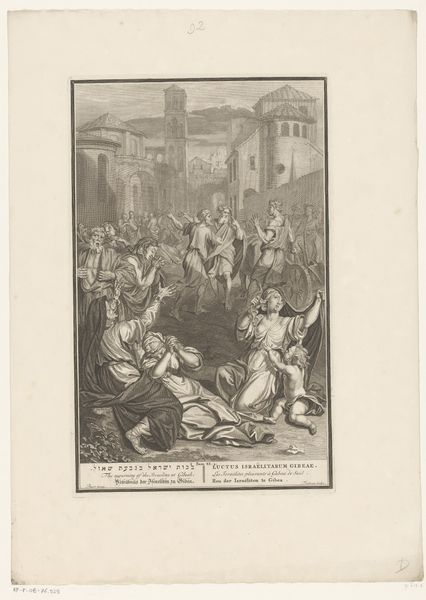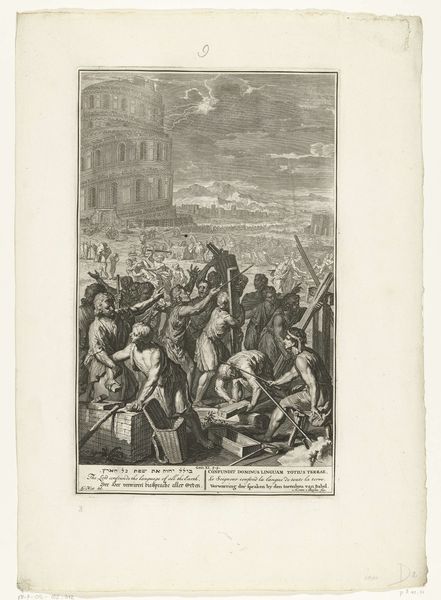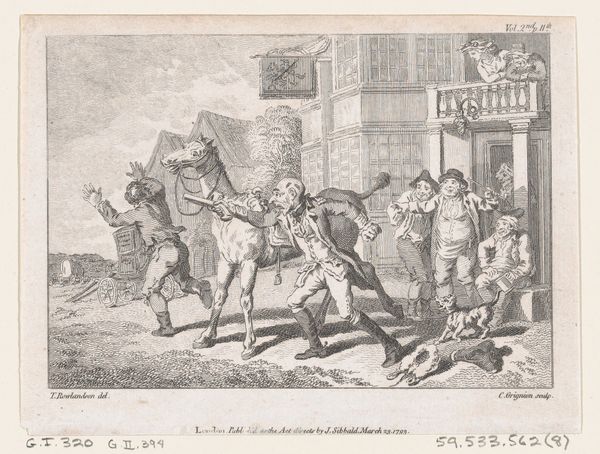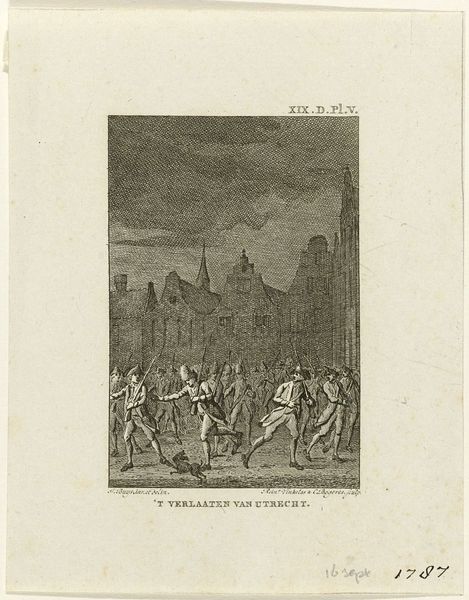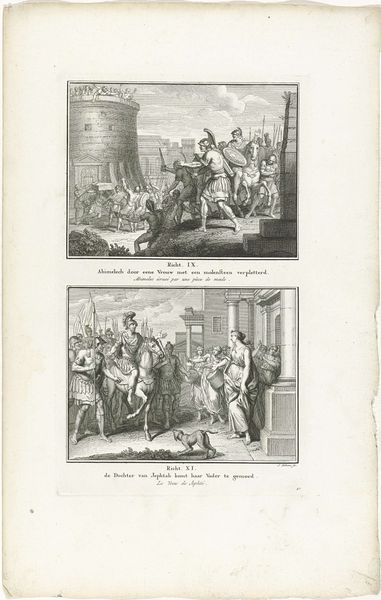
Opstand van het Kaas- en Broodvolk en moord op Claes van Ruyven te Haarlem, 1492 1783 - 1795
0:00
0:00
reiniervinkeles
Rijksmuseum
print, etching, engraving
#
narrative-art
#
dutch-golden-age
# print
#
etching
#
old engraving style
#
figuration
#
line
#
genre-painting
#
history-painting
#
engraving
#
realism
Dimensions: height 160 mm, width 100 mm
Copyright: Rijks Museum: Open Domain
Reinier Vinkeles etched this print, “Opstand van het Kaas- en Broodvolk,” depicting a riot in Haarlem in 1492. The central image shows a chaotic uprising: men with clubs attack a fallen figure while others wave banners. The clubs wielded by the mob are primitive weapons, symbols of raw, untamed anger. Banners representing local affiliations flutter in the background, illustrating the collective nature of the revolt. Notice how such symbols of uprising recur throughout history, from ancient peasant revolts to the French Revolution. The club, a simple tool turned weapon, transforms into a potent emblem of the oppressed rising against authority. This is reminiscent of the classical motif of the "Fasces," a bundle of wooden rods signifying power and unity, which can be seen in Roman art. But here, the singular rod becomes a bludgeon, a symbol of violent action. The psychological weight of such imagery is profound. It taps into a collective memory of struggle and resistance, evoking powerful emotions tied to the human desire for justice and equality. The act of bearing arms or a simple club has taken on new meanings in our own time with different groups brandishing them in new ways. Consider the image as a potent reminder of the cyclical nature of history, where the yearning for freedom manifests again and again.
Comments
No comments
Be the first to comment and join the conversation on the ultimate creative platform.
